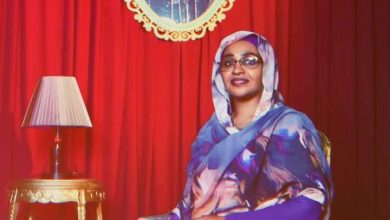On the message of World Theater Day: Al-Sir Al Sayed

March 27 of every year is World Theater Day. In this year 2024, the World Theater Day message was written by the Norwegian writer and winner of the Nobel Prize for Literature last year (John Foss) and translated into Arabic by the Tunisian theater artist (Anwar Al-Shaafi).
The message came, and here I of course mean the version translated into Arabic, which took “Art is Peace” as its title. It came in a poetic language charged with emotion, and this may be due to the ideas it expressed, which are ideas in general that are not devoid of closeness to the borders of philosophy or even Sufism, including It is a cognitive achievement known to all peoples.
The message, in its entire body, talks about man as a social being and at the same time in contact with what is universal, then it throws him into history so that we can see him with the rest of humanity…with people…and the message, within its rhetoric and philosophy, uses the word “person” to express man, and it is a word as we know. Its presence carries many cognitive connotations through its manifestations in philosophy, Sufism, sociology, economics, and culture.
The letter stated: “Every person is unique and at the same time similar to any other person…”
The paradox here lies in the combination of uniqueness and similarity.
To the extent that a person is unique, we find him similar to another person. This is at the level of nature, genes, and personal experience, but when we place this uniqueness and similarity within history with its intertwined societal structures, people or human beings, to the extent that they are different, will “have their uniqueness.” They are similar as well, “they have their commonalities and their commonalities.”
The letter said: “People from all over the world are basically the same no matter what language they speak or what color their skin or hair is.
This may be a paradox, that we are completely similar and completely different at the same time.”
The value of this hypothesis, which came in a message that pleads in a poetic style laden with emotion that revolves around the fever of philosophy and mysticism, lies in the fact that, contrary to what is prevalent,
As much as it goes on in praising (difference), it also goes on in praising similarity and commonality. To the extent that it exalts the value of uniqueness, it exalts the value of similarity and commonality. And here lies its uniqueness in its effort to establish what I call (coexistence), which here does not mean managing difference only as it is.
It is fashionable now, but also to look at the presence of similarity and activate it instead of suppressing it with the power of difference, and perhaps this is what (art) does or is able to do, as it was stated in the letter: (But art, good art, succeeds in its miraculous way in combining the completely unique… And what is universal…until he says: Art can be understood universally, thus crossing borders, all regions of the world and countries, and thus it not only combines the characteristics of each individual, but also, in other words, the individual characteristics shared by a group of people, nations.
For example, art does not make them all the same, but on the contrary, it highlights their differences…”
This entire message is dedicated to revealing that, as much as we are similar as human beings, uniqueness and difference always disturb and frighten us, particularly in his words: “When it turns into a collective identity in which difference is considered a threat that must be controlled…”
Therefore, he sees war as nothing more than a struggle against what lies deep within us, against what is unique, and he sees good art as always striving “to ensure that what is becomes completely unique, and completely distinct in a universal dimension.” Perhaps this is what prompted him to conclude his message by saying:
“War and art conflict, just as war and peace conflict. Art is peace.”
In concluding this brief comment, I say:
(We, as Sudanese, and as Sudanese theater artists, and since April 15, 2023, have been living in a war that has destroyed the field and lineage, the main reason for which lies in the inability of its initiators, or their neglect, to realize the value of uniqueness and difference in its presence with similarity and commonality, or the value of similarity and commonness in its presence with uniqueness and difference…
so it was said The majority of our artists, in a loud voice: (No to war)…Stop the war and return to peace.
It is a message that expresses our situation perfectly.
Thank you, great writer (John Foss)
Thank you, the artist (Anwar Al-Shaafy)
Happy new year).



